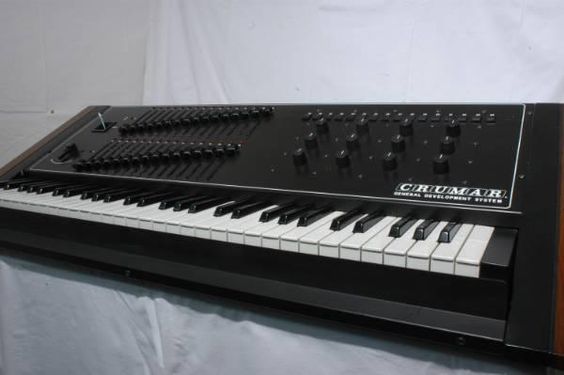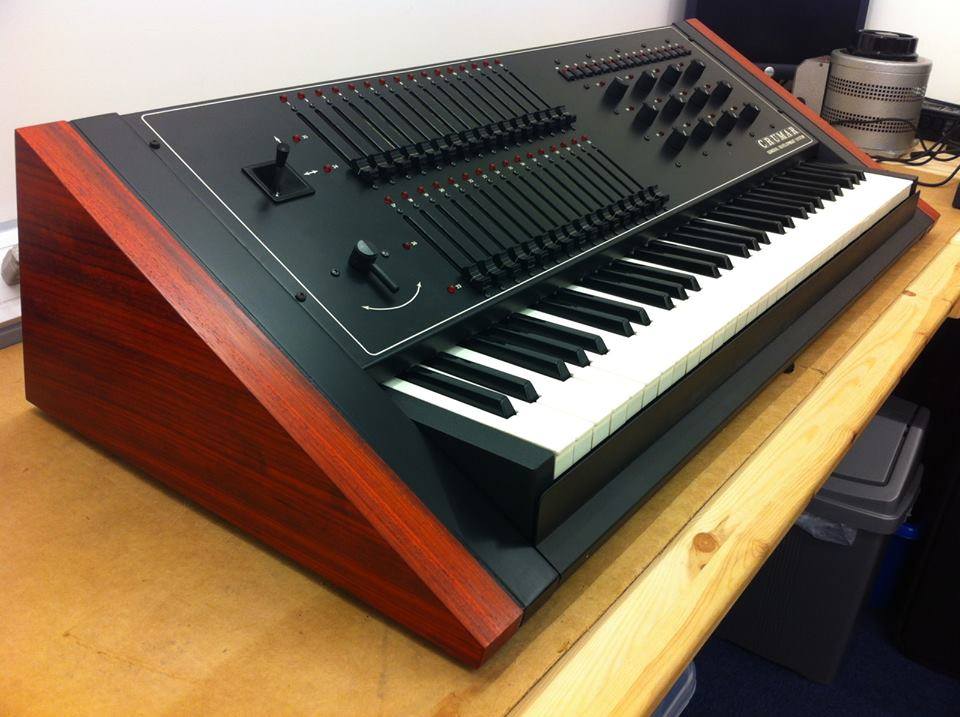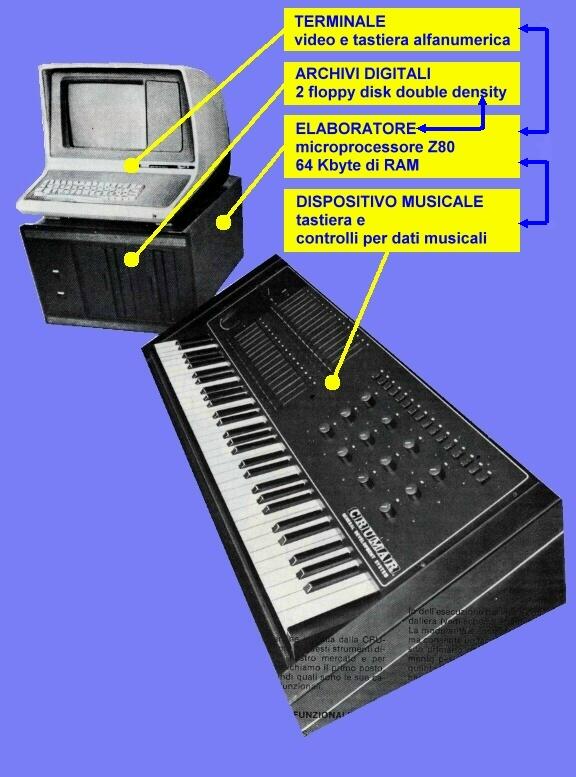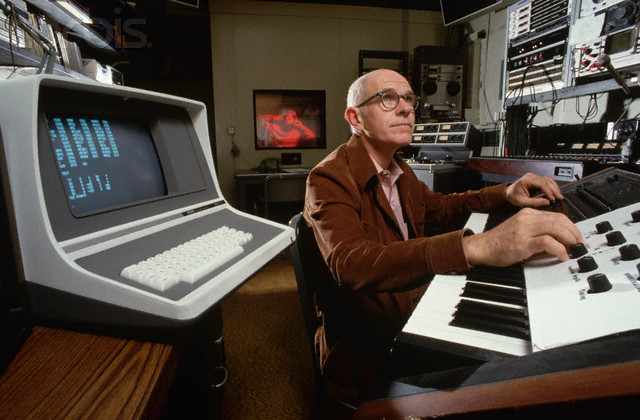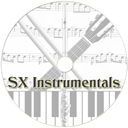Filter on ALL, SYNTH, DRUM, SAMPLER or MISC |
Total list currently 2405 items in 330 Brands |
DKI | GDS |
Description | There is another branded Crumar machine that deserves to be mentioned while remaining in effect, then as now, unapproachable. I'm talking about the GDS (General Development System), a real fully computer sound research laboratory. Initially the project was developed by Hal Alles at the "Bell Telephone Inc." in the United States; He crumar the US distributor had bought the manufacturing rights and proposed to Crucianelli to continue to subsidize the studies for the production of the final system. For the Italian company, which invested considerable capital in the project, it was the beginning of the end. The system in question were built only five, maybe six, two copies of which sold to electronic musicians Klaus Schulze and W. Carlos (who also programmed an amount of the presets for it). The prohibitive cost was estimated in 1980 at around $27,000 (30 million lire in Italy). However, the GDS, it was a purely American project, was served at the "Music Technology Inc", which meanwhile became the "Digital Keyboards Inc.", as a programmer for the sounds of DKI SYNERGY, a totally different machine, and that did not have a its synthesis system. The GDS technically arose as a serious competitor of the various Farlight Computer or Alpha Syntauri, while working in a totally different from these. Unfortunately he was never marketed as deserved and remained forever a museum exhibit. The GDS system is the keypad lock 61 keys with touch response (well apart 256 different pressure velocity), connected to the terminal computer, a PDP-11s with RAM 64 MB and Zilog Z-80, the system OS is the old CP / M of the "Digital Research". The machine uses a form of digital synthesis of the 12-bit type additive (32 Khz) and mimics many of the functions and sounds of a classic synthesizer, also can use the known synthesis for frequency modulation. In addition to this the GDS makes the other: can store countless highlights programs, allows you to calculate, analyze and reproduce extremely complex waveforms, in addition to possessing an unprecedented amount of digital sounds and unusual parameters. Computer lock is operated directly from the keyboard and moves through musical logic programs, like the one that allows you to record sequences of eight digital tracks, or one related to the construction of waveforms. There are LED indicators on the keyboard 64, 32 and 12 potentiometers slider knob, 16 buttons, one with automatic return knob (pitch bend), a joystick, plus two double density floppy disc players on the houses and a computer terminal with monitor green phosphor, and alphanumeric keyboard (standard ASCII). Complete hardware kit two pedals to switch and a potentiometer. The panel with the commands undergoes a digital scanning 50 times per second while the keyboard is read well 3000 times per second. The system is not equipped, unlike the Farlight, analog / digital converters votes acquisition of external signals. If things had gone the right way and the system had taken hold, the Crumar set itself the aim of collecting and distributing the various programs developed by users; this would have enabled in a short time to create a decidedly more supplied library of software than that of series. SOFTWARE THE VOICE PROGRAM (music software) This program allows you to create sounds during the session to the computer; you can then program the stamps using the additive synthesis or that in frequency modulation (FM). Also you can set the virtual filters and other sound parameters. Are used up to a maximum of 32 fully-programmable digital oscillators, each has a frequency range from 0 to 13000 Hz; the sampling rate is 32,000 samples per second with an amplitude of 66 dB (12-bit). It is also to keep in mind that using the virtual network between the oscillators (patching network) is possible to realize different synthesis techniques with a maximum amplitude in the output range equal to 90 dB (15-bit). The waves produced are the sine and triangular modified at will; all operations on the waves, in addition to those on the filters and the envelopes, are visible on the live video while you work with sounds. The 32 virtual filters are instead programmed using the sliders on the panel of the keyboard; thanks to the interpolation frame, you can obtain a maximum of 128 filters for each item. It 'something really overwhelming but this indicates that the synthesis experiments with GDSs have no limits. PERFORM THE PROGRAM (music software) This program is used for live performances at the keyboard under full computer control. It may in this case control up to a maximum of eight polyphonic voices simultaneously, then eight different timbre, and up to sixteen notes simultaneously. For each stamp or digital item is associated with a bank of 32 virtual filters programmed by the same user. While running with the joystick you can choose the configuration of the filters (vertical position) and the frequency value by attenuation or phase shift (horizontal position). For each of the eight entries, you can select two different timbres; In addition the machine uses an interpolation timbre selecting according to key presses up to 32 different models of parametric settings; This can be used to simulate perfectly the traditional instruments that will respond differently depending on your playing technique. The characteristics of the sounds, as well as the touch sensitivity, can be programmed independently for each individual digital voice up to a maximum of six separate polytimbral ways. There are six different methods to assign the timbre while running, you can still choose a constant sound to which are added other more complex; the six operating modes are as follows: UNISON MODE: when you press a button all active voices begin to sound that note simultaneously. ROLLING MODE: When you press a key takes a sequence of items other pre-selected. FIRST AVAILABLE MODE: each key pressed is associated with the entry with the least number of active notes at the time (for extended polyphonic versions). SPLIT MODE: two separate entries are assigned to two separate parts, and also settable keyboard. SPLIT / ROLLING MODE: you combine the two executive ways specified above. SPLIT / FIRST AVAILABLE MODE: you combine the two executive ways specified above. Even the pedals are programmable, meaning that you can use to control up to three different functions during execution. Very interesting is the intelligent glissando which allows to combine freely held notes and not kept. It performs the program also allows you to record sequences of eight digital tracks and play them automatically while you are playing; the principle in this case is that of the workstation. CHECK-UP PROGRAM (utility software) This program is used for diagnostics of any hardware failures or software malfunctions. Programs TEXT EDITOR (utility software) Compilers are programs that serve to translate into machine language the user's programming; then since we are talking about a personal PDP-11s computer using Fortran and Assembler languages, the General Purpose are strictly necessary. |
| Brand | DKI |
| Model | GDS |
| Device | Synth |
| Type | Keys |
| Engine Type | Digital |
| Engine | PD |
| Voices (max) | 16 |
| Multitimbral | 8 |
| Oscillators | 32 |
| Engine Detailed | 32 OSC, Sine, Triangle |
| Filter (VCF) | 128 |
| Envelope (VCA) | 32 user definable |
| Keys | 61 |
| Key type | Keys |
| Extra info | About 5-10 made |
| Produced: | 1980 - 1982 |
| Legend: | Obvious | Y: Yes, N: No, N/A: Not Applicable | |
| VCO | Voltage Controlled Oscillator | DCO | Digital Controlled Oscillator |
| LFO | Low Frequency Oscillator | Sub | Sub Oscillator |
| VCF | Voltage Controlled Filter | VCA | Voltage Controlled Amplifier |
| Velocity | As with a piano, the harder you hit a key, the louder the sound, unlike most organs which always produce the same loudness no matter how hard you hit a key. | Aftertouch | Pressing a key after you activated it. Channel Aftertouch, no matter which key, it will send a Channel message. Poly Aftertouch, sends the pressure per key instead of the whole channel. |
| Values for OSC, LFO, Filter, Envelope are per voice unless stated otherwise. | |||
